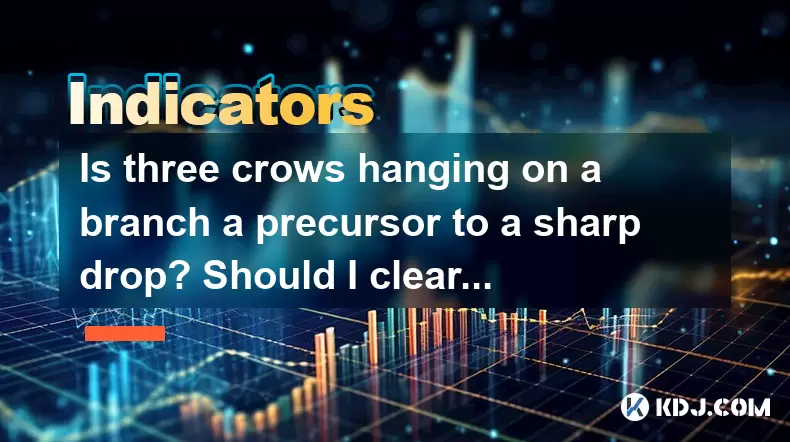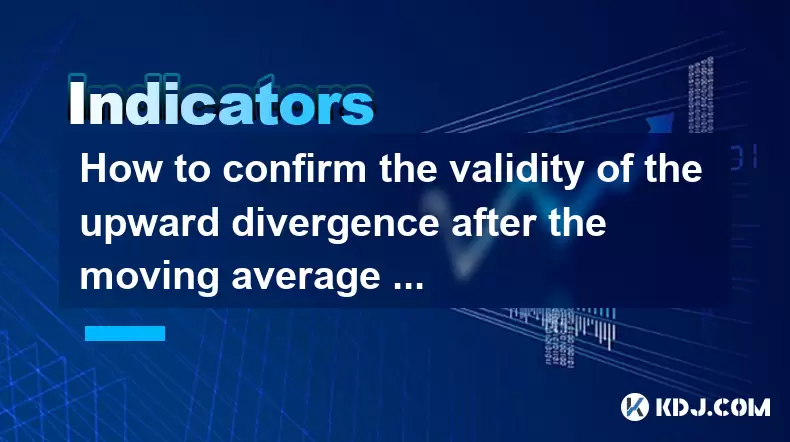-
 Bitcoin
Bitcoin $106,754.6083
1.33% -
 Ethereum
Ethereum $2,625.8249
3.80% -
 Tether USDt
Tether USDt $1.0001
-0.03% -
 XRP
XRP $2.1891
1.67% -
 BNB
BNB $654.5220
0.66% -
 Solana
Solana $156.9428
7.28% -
 USDC
USDC $0.9998
0.00% -
 Dogecoin
Dogecoin $0.1780
1.14% -
 TRON
TRON $0.2706
-0.16% -
 Cardano
Cardano $0.6470
2.77% -
 Hyperliquid
Hyperliquid $44.6467
10.24% -
 Sui
Sui $3.1128
3.86% -
 Bitcoin Cash
Bitcoin Cash $455.7646
3.00% -
 Chainlink
Chainlink $13.6858
4.08% -
 UNUS SED LEO
UNUS SED LEO $9.2682
0.21% -
 Avalanche
Avalanche $19.7433
3.79% -
 Stellar
Stellar $0.2616
1.64% -
 Toncoin
Toncoin $3.0222
2.19% -
 Shiba Inu
Shiba Inu $0.0...01220
1.49% -
 Hedera
Hedera $0.1580
2.75% -
 Litecoin
Litecoin $87.4964
2.29% -
 Polkadot
Polkadot $3.8958
3.05% -
 Ethena USDe
Ethena USDe $1.0000
-0.04% -
 Monero
Monero $317.2263
0.26% -
 Bitget Token
Bitget Token $4.5985
1.68% -
 Dai
Dai $0.9999
0.00% -
 Pepe
Pepe $0.0...01140
2.44% -
 Uniswap
Uniswap $7.6065
5.29% -
 Pi
Pi $0.6042
-2.00% -
 Aave
Aave $289.6343
6.02%
Is three crows hanging on a branch a precursor to a sharp drop? Should I clear my position?
The "three crows hanging on a branch" is a bearish candlestick pattern signaling a potential downtrend reversal in crypto, marked by three consecutive red candles with lower closes and strong selling pressure.
Jun 17, 2025 at 12:50 pm

What Does "Three Crows Hanging on a Branch" Mean in Crypto Trading?
In technical analysis, the "three crows hanging on a branch" is a candlestick pattern that often signals a potential reversal from an uptrend to a downtrend. This pattern typically appears after a period of rising prices and consists of three consecutive bearish (red) candles with progressively lower closes. Each candle opens slightly higher than the previous close but then drops significantly, forming long bodies without much upper or lower shadows.
This formation suggests that sellers are gaining control after a bullish phase. In the cryptocurrency market, where volatility is high and sentiment can shift rapidly, recognizing such patterns can be crucial for traders aiming to protect their capital or anticipate price corrections.
How to Identify the Three Crows Hanging on a Branch Pattern
Identifying this pattern requires attention to specific candlestick characteristics:
- The pattern occurs during an upward trend
- Three consecutive bearish candles appear
- Each candle opens near the previous candle’s closing price
- Each candle closes significantly lower than its open
- Minimal upper or lower shadows, indicating strong selling pressure throughout each session
The presence of these traits increases the likelihood that the pattern is valid and not just random noise. It's essential to cross-reference with other indicators like volume spikes or moving averages to confirm the strength of the signal.
Why Is This Pattern Important in Cryptocurrency Markets?
Cryptocurrencies are known for their rapid price movements, often driven by market psychology, news events, and macroeconomic factors. The three crows pattern serves as a visual cue that momentum may be shifting from buyers to sellers.
When observed on key resistance levels or after extended rallies, the pattern becomes more reliable. Traders who monitor these signals closely may interpret it as a warning sign to reduce exposure or prepare for a correction. Given the speculative nature of crypto assets, even small shifts in sentiment can lead to substantial price drops within short periods.
Should You Clear Your Position Based on This Pattern Alone?
Relying solely on one candlestick pattern to make trading decisions can be risky. While the three crows hanging on a branch is a strong bearish signal, especially in traditional markets, crypto markets have unique dynamics due to their 24/7 trading and decentralized structure.
Before making drastic moves like clearing your position:
- Confirm the pattern with volume data—a spike in selling volume strengthens the bearish case
- Check if the pattern aligns with key support/resistance levels
- Consider using stop-loss orders rather than exiting entirely
- Evaluate broader market conditions and news cycles
Traders should also consider timeframes. A three crows pattern on a daily chart may carry more weight than one on a 1-hour chart. If you're holding long-term and believe in the fundamentals of the asset, short-term signals might not warrant full liquidation.
How Can You Use This Signal in Risk Management?
For active traders, integrating the three crows pattern into a risk management strategy can help mitigate losses. Here’s how:
- Place a stop-loss order just above the high of the first crow to limit downside risk
- Scale out of positions gradually instead of selling all at once
- Combine the pattern with moving average crossovers or RSI divergence for confirmation
- Monitor order books and liquidity levels around the pattern to avoid getting caught in fakeouts
By layering multiple tools and techniques, traders can better assess whether the signal is genuine or part of normal market fluctuation.
Frequently Asked Questions (FAQ)
Q: Can the three crows hanging on a branch pattern occur in sideways markets?
Yes, although less commonly. When it does, it may indicate weakness in buying pressure and could precede a breakdown from a consolidation phase.
Q: How reliable is this pattern in altcoin trading?
Altcoins tend to be more volatile and susceptible to manipulation. Therefore, while the pattern still holds value, it should be used alongside other filters like on-chain metrics or exchange inflows/outflows.
Q: What if the fourth candle after the pattern turns bullish?
A strong bullish candle following the three crows may invalidate the bearish signal. This scenario suggests that buyers have regained control and could mark a continuation of the uptrend.
Q: Are there similar candlestick patterns that traders confuse with the three crows?
Yes, the three black crows and falling three methods are sometimes mistaken for each other. The falling three methods is actually a continuation pattern, so distinguishing between them is critical for accurate interpretation.
Disclaimer:info@kdj.com
The information provided is not trading advice. kdj.com does not assume any responsibility for any investments made based on the information provided in this article. Cryptocurrencies are highly volatile and it is highly recommended that you invest with caution after thorough research!
If you believe that the content used on this website infringes your copyright, please contact us immediately (info@kdj.com) and we will delete it promptly.
- BONK, Ethereum, and AI Utility: A New Era?
- 2025-06-21 12:25:12
- Bitcoin Price Prediction: Will BTC Bounce Back or Break Down?
- 2025-06-21 12:25:12
- BONK Price Prediction: Will the Meme Coin Rebound?
- 2025-06-21 12:30:12
- Bitcoin's $100K-$110K Range: Short Interest Heats Up!
- 2025-06-21 12:45:12
- CoinMarketCap Under Fire: Wallet Scam Highlights Malicious Activity
- 2025-06-21 12:45:12
- Bitcoin, Hedge Funds, and Eric Semler: A Wall Street Waltz?
- 2025-06-21 10:45:11
Related knowledge

Does the sudden contraction of ATR indicate the end of the trend?
Jun 20,2025 at 11:14pm
Understanding ATR and Its Role in Technical AnalysisThe Average True Range (ATR) is a technical indicator used to measure market volatility. Developed by J. Welles Wilder, ATR calculates the average range of price movement over a specified period, typically 14 periods. It does not indicate direction—only volatility. Traders use ATR to gauge how much an ...

Is it invalid if the DMI crosses but the ADX does not expand?
Jun 21,2025 at 09:35am
Understanding the DMI and ADX RelationshipIn technical analysis, the Directional Movement Index (DMI) consists of two lines: +DI (Positive Directional Indicator) and -DI (Negative Directional Indicator). These indicators are used to determine the direction of a trend. When +DI crosses above -DI, it is often interpreted as a bullish signal, while the opp...

Is the trend continuation when the Williams indicator is oversold but there is no rebound?
Jun 20,2025 at 11:42pm
Understanding the Williams %R IndicatorThe Williams %R indicator, also known as the Williams Percent Range, is a momentum oscillator used in technical analysis to identify overbought and oversold levels in price movements. It typically ranges from 0 to -100, where values above -20 are considered overbought and values below -80 are considered oversold. T...

Is the golden cross of the ROC indicator below the zero axis effective?
Jun 20,2025 at 09:42pm
Understanding the ROC Indicator and Its Role in Cryptocurrency TradingThe Rate of Change (ROC) indicator is a momentum oscillator widely used by traders to assess the speed at which cryptocurrency prices are changing. It measures the percentage difference between the current price and the price from a certain number of periods ago. The ROC helps identif...

How to confirm the validity of the upward divergence after the moving average sticks together?
Jun 21,2025 at 01:36am
Understanding the Basics of Moving Averages and DivergenceIn technical analysis, moving averages are crucial tools used to smooth out price data over a specified time period. When multiple moving averages converge or 'stick together,' it often indicates a consolidation phase in the market. This phenomenon can be a precursor to significant price movement...

What should I do if the KD indicator crosses in the oversold zone but the rebound is weak?
Jun 21,2025 at 07:07am
Understanding the KD Indicator and Its Role in Crypto TradingThe KD indicator, also known as the stochastic oscillator, is a momentum-based technical analysis tool commonly used in cryptocurrency trading. It consists of two lines — the %K line and the %D line — that fluctuate between 0 and 100. The primary function of this indicator is to identify overb...

Does the sudden contraction of ATR indicate the end of the trend?
Jun 20,2025 at 11:14pm
Understanding ATR and Its Role in Technical AnalysisThe Average True Range (ATR) is a technical indicator used to measure market volatility. Developed by J. Welles Wilder, ATR calculates the average range of price movement over a specified period, typically 14 periods. It does not indicate direction—only volatility. Traders use ATR to gauge how much an ...

Is it invalid if the DMI crosses but the ADX does not expand?
Jun 21,2025 at 09:35am
Understanding the DMI and ADX RelationshipIn technical analysis, the Directional Movement Index (DMI) consists of two lines: +DI (Positive Directional Indicator) and -DI (Negative Directional Indicator). These indicators are used to determine the direction of a trend. When +DI crosses above -DI, it is often interpreted as a bullish signal, while the opp...

Is the trend continuation when the Williams indicator is oversold but there is no rebound?
Jun 20,2025 at 11:42pm
Understanding the Williams %R IndicatorThe Williams %R indicator, also known as the Williams Percent Range, is a momentum oscillator used in technical analysis to identify overbought and oversold levels in price movements. It typically ranges from 0 to -100, where values above -20 are considered overbought and values below -80 are considered oversold. T...

Is the golden cross of the ROC indicator below the zero axis effective?
Jun 20,2025 at 09:42pm
Understanding the ROC Indicator and Its Role in Cryptocurrency TradingThe Rate of Change (ROC) indicator is a momentum oscillator widely used by traders to assess the speed at which cryptocurrency prices are changing. It measures the percentage difference between the current price and the price from a certain number of periods ago. The ROC helps identif...

How to confirm the validity of the upward divergence after the moving average sticks together?
Jun 21,2025 at 01:36am
Understanding the Basics of Moving Averages and DivergenceIn technical analysis, moving averages are crucial tools used to smooth out price data over a specified time period. When multiple moving averages converge or 'stick together,' it often indicates a consolidation phase in the market. This phenomenon can be a precursor to significant price movement...

What should I do if the KD indicator crosses in the oversold zone but the rebound is weak?
Jun 21,2025 at 07:07am
Understanding the KD Indicator and Its Role in Crypto TradingThe KD indicator, also known as the stochastic oscillator, is a momentum-based technical analysis tool commonly used in cryptocurrency trading. It consists of two lines — the %K line and the %D line — that fluctuate between 0 and 100. The primary function of this indicator is to identify overb...
See all articles

























































































